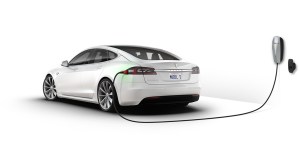New studies reveal that electric vehicles are causing an increase in motion sickness that surpasses the nausea felt while driving in the rattling cars of the 1970s. Motion sickness occurs when our bodily senses conflict with the movement we are experiencing, and the smooth drive of an EV could actually cause drivers and passengers to feel sick.
EVs are lighter in weight than traditional gas engines, as the battery is the heaviest component. Combustion engines require heavy engines in the front or rear of the vehicle that give the illusion of balance. Traditional engines need a few seconds to accelerate, unlike most EVs, and the human body is often unable to adjust to the new motion.
“If we are accustomed to traveling in non-EVs, we are used to understanding the car’s motion based on signals such as engine revs, engine vibrations, torque, etc. Yet, traveling in an EV for the first time is a new motion environment for the brain, which needs adaptation,” William Emond, a Ph.D. student at France’s Université de Technologie de Belfort-Montbéliard stated.
The body experiences a “neural mismatch” when driving in an EV as our bodies anticipate a motion that does not occur, leading to motion sickness. The regenerative braking feature adds to the feeling of a “longitudinal jerk” motion, causing passengers to experience disease. Our bodies anticipate the sound and vibration of an engine. There are no cues for our bodies to process the motion of EVs.
“When I turn my head from left to right, I have my eyes that tell me I did that motion. I have my sense of balance that tells me that, and [I] have information from my muscles and joints,” Behrang Keshavarz, PhD, motion sickness expert, senior scientist at the University of Toronto KITE Research Institute, and adjunct professor of psychology at Toronto Metropolitan University, told Health. “Usually those three systems signal the same thing, no problem at all. But now, when you get motion sickness, the theory is that there’s a mismatch between at least two of these systems.”
Keshavarz and others believe that incorporating a visual or auditory aid could ease motion sickness for passengers. Drivers and pilots rarely experience this feeling as they are in control and see every turn or turbulence ahead. One company is attempting to create artificial engine sounds to incorporate in EVs. Others are looking at incorporating visual lights to give the body a signal. BMW i5 has already incorporated sound settings, while the Hyundai Ioniq 5 N can mimic the roar of an engine.
The notion that EVs are less pleasant for passengers now has some scientific backing. This does not bode well for car manufacturers or ride-share services that rely on EVs. Auditory and/or visual sensations will likely be incorporated in new EVs to increase comfortability.













